By Rich Sacher
When we grow water lilies or bog plants in submerged pots, we must remember that this is a very artificial situation. Most roots are confined to the pot, and they often do not have enough time to grow out of the pot, and into the surrounding pond soil.
This is why we put fertilizer in the pot before we plant the lily or bog plant; and this is also why we need to fertilize often during the growing season, to constantly replace the nutrients which have been absorbed.
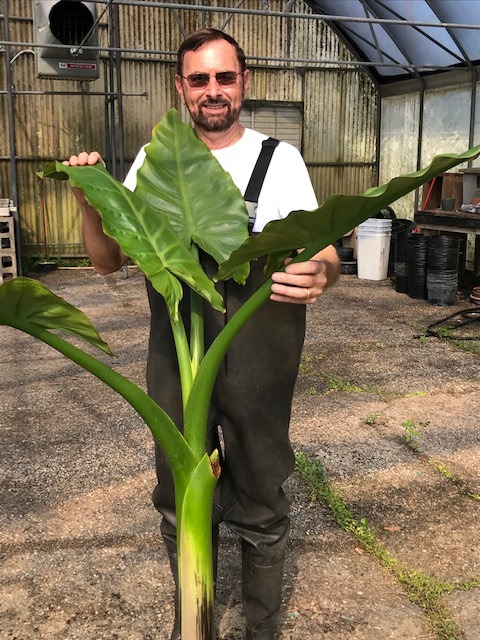
This Typhonodorum was raised from seeds.
This picture of Typhonodorum, taken today, illustrates how we can grow large plants in small pots, if we fertilize often enough.
It was in a six inch (15 cm) pot six months ago, and then it was transplanted into a 12 inch (30 cm) pot. The pot is not very large, but the plant is almost as tall as I am, at six feet. Every month, I top dress the soil with fertilizer.
I remove the plant from the pond, sprinkle a teaspoon of fertilizer on the soil, cover it with a layer of sand, and then put it back into the pond. Note that in the six months that the plant has been in this pot, it is only now beginning to send roots out of the bottom of the pot.
Because the pot is small, it is easy to move this tall plant to a display pond when we want to. This same method of top dressing mature, potted water lilies with fertilizer also allows large lilies to grow in fairly small pots. Fertilizer is the magic ingredient! At the botanic garden, we dye the water black, to eliminate any green water (algae) which might result from all this additional fertilizer.
The plant has been in this 12 inch pot (30 cm) for six months now, and is still getting bigger.
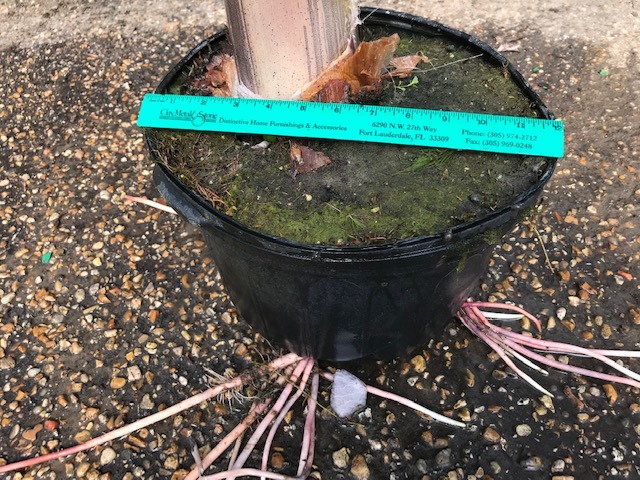
This 12 inch ruler shows that the pot is only 12 inches in diameter. A few new roots are now beginning to escape the bottom of the pot.
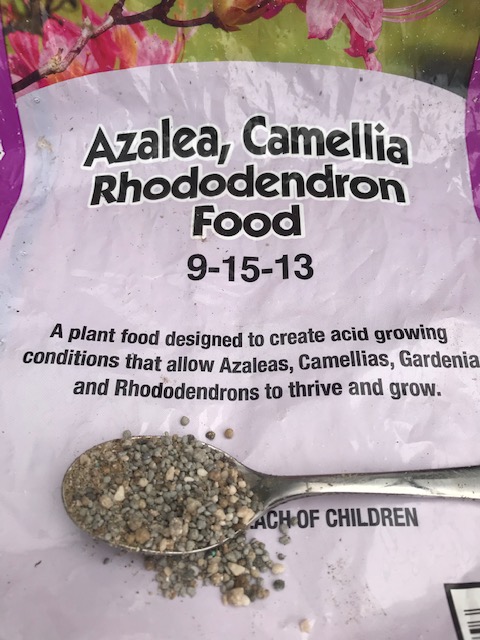
Any coarse granular fertilizer can be used, but we use a teaspoon of this fertilizer every month on this 12 inch pot.
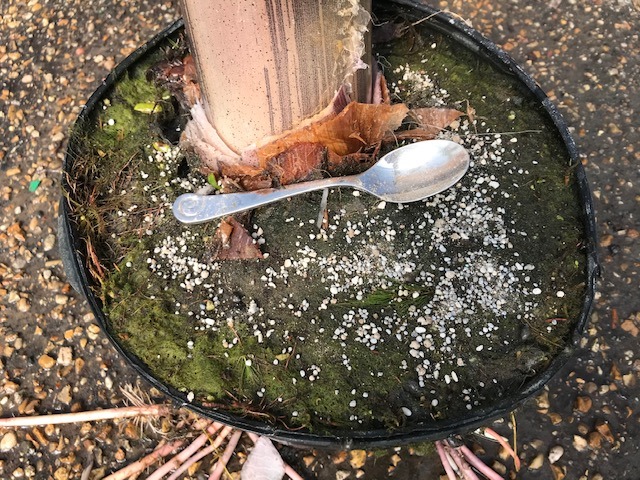
The fertilizer is sprinkled on the top of the soil. This is known as “top dressing” with fertilizer, a common practice for feeding terrestrial plants, both potted and in the ground.Farmers use this kind of fertilizer application in their field crops all the time. It works well when the lily or bog plant is so root bound, that tablets cannot be forced into the soil.
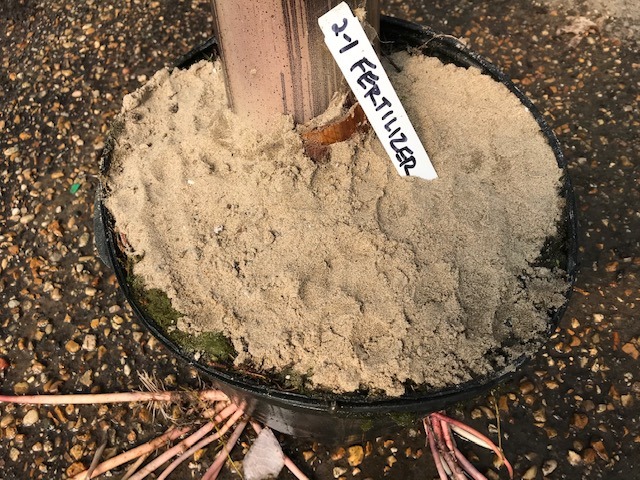
The fertilizer is covered with a fresh layer of sandy soil, to help keep the fertilizer buried in the soil at the top of the pot. The potted plant is now returned to the pond, where it will continue to grow quickly, because of the new fertilizer.

One thought to “Fertilizing water plants”
I have had your water lilies for 20 years. I found that commercial tomato fertilizer sticks
Are great! Also love your blue and white La iris that I have had 2 years and have tripled in number